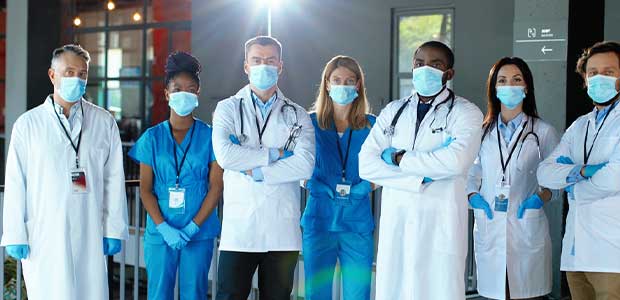
Emergency Temporary Standard for Healthcare Workers is in Effect
Due to COVID-19, regulations and precautions continue to change in the workplace.
- By Shereen Hashem
- Jun 15, 2021
An interview with Charlie Morgan, partner in Alston & Bird’s Labor & Employment Group was conducted to discuss OSHA’s new emergency workplace safety rule regarding the emergency temporary standard for healthcare workers.
a. OSHA has released an ETS for Healthcare workers; are you surprised that this ETS only covers those in healthcare?
OSHA specifically found that the “grave danger” threshold for an emergency temporary standard was met in the healthcare setting, even for vaccinated workers, primarily because of the frequent exposure to COVID-19 cases and the risk of breakthrough infections. OSHA suggests that such “grave danger” does not exist in other non-healthcare workplace settings, so it seems likely that healthcare will be the only industry with a COVID-19 ETS. That of course could change, and time will tell.
Presumably the risk of exposure to COVID-19 is greater in a healthcare setting than in general industry, so it is not surprising to me that the standard is focused only on healthcare.
b. What does the ETS require and how long do healthcare facilities have to comply?
Most of the standard goes into effect 14 days after the standard is published in the Federal Register. The provisions regarding barriers, ventilation, and training go into effect 30 days after publication. There is a “mini-respirator protection program” provision that relates to a COVID-19 respirator program that goes into effect immediately upon publication.
The standard requires healthcare settings to develop and implement a COVID-19 plan for each workplace, including measures for patient screening, PPE, distancing, physical barriers, cleaning and disinfection, ventilation, notification of positive COVID-19 status, contact tracing, and medical removal of positive cases. Note that the new standard also requires medical removal protection benefits, requiring continued pay and benefits for employees out of work because of COVID-19. The standard also requires paid time off for vaccination and side effects of vaccination. Further, the standard requires healthcare employers to maintain a COVID-19 log of all positive cases, whether work-related or not.
c. In addition, OSHA updated its COVID-19 guidance for workers, what all was updated?
The OSHA guidance for general industry was also amended on June 10, 2021 to make it consistent with the CDC guidance for vaccinated persons. The new guidance notes that fully vaccinated people can resume activities without wearing masks or physically distancing, except where otherwise required, and that employers should still take steps to protect unvaccinated or otherwise at-risk workers in their workplaces.
For reference, read our current article about OSHA issuing an emergency temporary standard to protect healthcare workers. Our most recent podcast episode addresses ETS, as well.
About the Author
Shereen Hashem is the Associate Content Editor for Occupational Health & Safety magazine.